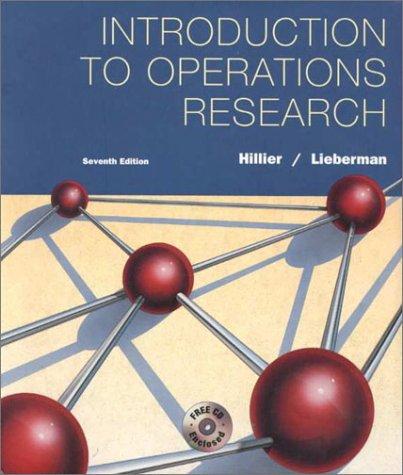Consider a single-server queueing system with a Poisson input, Erlang service times, and a finite queue. In
Question:
Consider a single-server queueing system with a Poisson input, Erlang service times, and a finite queue. In particular, suppose that k 2, the mean arrival rate is 2 customers per hour, the expected service time is 0.25 hour, and the maximum permissible number of customers in the system is 2. This system can be formulated as a continuous time Markov chain by dividing each service time into two consecutive phases, each having an exponential distribution with a mean of 0.125 hour, and then defining the state of the system as (n, p), where n is the number of customers in the system (n 0, 1, 2), and p indicates the phase of the customer being served (p 0, 1, 2, where p 0 means that no customer is being served).
(a) Construct the corresponding rate diagram. Write the balance equations, and then use these equations to solve for the steadystate distribution of the state of this Markov chain.
(b) Use the steady-state distribution obtained in part
(a) to identify the steady-state distribution of the number of customers in the system (P0, P1, P2) and the steady-state expected number of customers in the system (L).
(c) Compare the results from part
(b) with the corresponding results when the service-time distribution is exponential.
Step by Step Answer:

Introduction To Operations Research
ISBN: 9780072321692
7th Edition
Authors: Frederick S. Hillier, Gerald J. Lieberman





